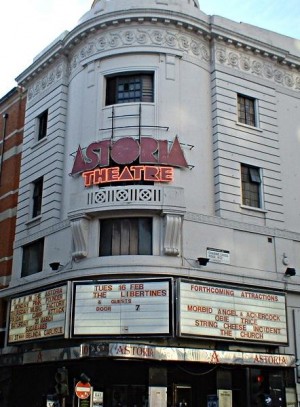
- London Astoria
The Sad Demise Of London’s Best Clubs
Former London clubs have been wiped out due to redevelopment, financial problems and a wane in popularity. We say goodbye to Bagleys, The End and the Astoria.
Industry figures show that almost half of the UK’s clubs have closed down in the past decade and, unfortunately, London has lost some iconic venues.
The Blame
Experts are at odds over the reasons for the decline of nightclubs in general. Some believe that it is too difficult to secure late licences as clubs are in constant battles with residents over noise levels. As they’re not able to gather the necessary numbers to police their events, club nights end up being cancelled and punters move on.
Others believe that the smoking ban, the cost of student tuition fees and the general economy may be to blame. It’s not that there are less people going out at the weekends, but they are choosing cheaper party alternatives to the traditional club night. These include warehouse raves, house parties and even the increased popularity of music festivals.
London’s Urban Regeneration
London is slightly different to other areas of the UK, in that a huge amount of money has been invested in urban regeneration and an overhaul of the public transport system. The constantly evolving landscape of the capital means that whole areas get wiped out and replaced with new developments.
In 2007, the clubland of King’s Cross changed forever as we said goodbye to three of London’s largest venues: ‘The Cross’, ‘The Key’ and ‘Canvas’. The latter was formerly ‘Bagleys’ and these three warehouse clubs formed a golden triangle for clubbers. They were replaced by the regeneration of the entire King’s Cross area which now includes property and entertainment developments.
The building of Crossrail was responsible for the closure of ‘The Astoria’ which was bulldozed to create a larger ticket hall for the new Tottenham Court Road station in 2009. The former club was home to LGBT night G.A.Y which attracted performances from artists such as Kylie and Britney.
Another club lost to station construction work was the short-lived ‘Cable’, which opened its doors in 2009 and had them firmly closed by Network Rail in 2013. The club had a 1,300 capacity and was located beneath London Bridge station. Founder Euan Johnston explains “We were assured when we moved in that we would not be affected by the redevelopment and Network Rail have simply changed their minds.”
Recession
Of course, the global economic crisis was bound to affect the pockets of clubbers and club owners on a massive scale. Therefore it comes as no surprise that venues such as ‘SeOne’ in London Bridge closed its doors due to the recession. The club had previously boasted that it was London’s biggest nightclub with a capacity of 3,000. When the recession hit, it became harder to fill the club. As the vibe had moved on, the club had its last dance in 2010.
Other clubs such as ‘The End’ and ‘Turnmills’ simply lost their buzz and decided to quit whilst they were ahead by choosing not to renew their leases.
Many club industry experts believe that nightclubs are cyclical and that they come and go in popularity. However, some venues really do manage to stand the test of time. The glamorous ‘Café de Paris’ has been entertaining guests in the West End since 1924, whilst ‘Raffles’ has been an exclusive private members club in Chelsea for over 50 years. The capital may have lost some amazing venues, but clubbing is London is far from over just yet. Get on a guestlist this weekend and experience the best of London’s clubs for yourself.
